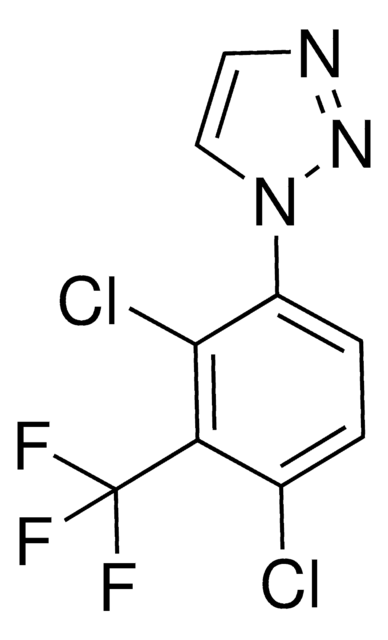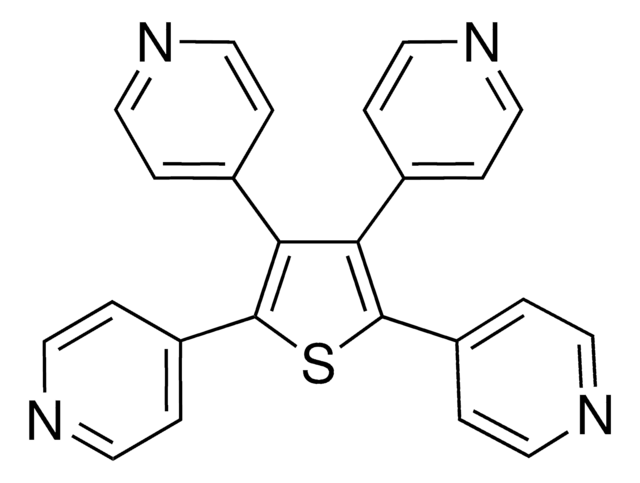SML1179
WWL113
≥98% (HPLC)
別名:
4′-[[[Methyl[[3-(4-pyridinyl)phenyl]methyl]amino]carbonyl]oxy]-[1,1′-Biphenyl]-4-carboxylic acid ethyl ester, Ethyl 4′-((methyl(3-(pyridin-4-yl)benzyl)carbamoyl)oxy)-[1,1′-biphenyl]-4-carboxylate
About This Item
おすすめの製品
品質水準
アッセイ
≥98% (HPLC)
形状
powder
色
white to beige
溶解性
DMSO: 10 mg/mL, clear
保管温度
2-8°C
SMILES記法
CCOC(C(C=C1)=CC=C1C(C=C2)=CC=C2OC(N(C)CC3=CC(C4=CC=NC=C4)=CC=C3)=O)=O
InChI
1S/C29H26N2O4/c1-3-34-28(32)25-9-7-22(8-10-25)23-11-13-27(14-12-23)35-29(33)31(2)20-21-5-4-6-26(19-21)24-15-17-30-18-16-24/h4-19H,3,20H2,1-2H3
InChI Key
AKIIPHDGVCFVCC-UHFFFAOYSA-N
生物化学的/生理学的作用
保管分類コード
11 - Combustible Solids
WGK
WGK 3
引火点(°F)
Not applicable
引火点(℃)
Not applicable
適用法令
試験研究用途を考慮した関連法令を主に挙げております。化学物質以外については、一部の情報のみ提供しています。 製品を安全かつ合法的に使用することは、使用者の義務です。最新情報により修正される場合があります。WEBの反映には時間を要することがあるため、適宜SDSをご参照ください。
Jan Code
SML1179-BULK:
SML1179-25MG:
SML1179-VAR:
SML1179-5MG:
試験成績書(COA)
製品のロット番号・バッチ番号を入力して、試験成績書(COA) を検索できます。ロット番号・バッチ番号は、製品ラベルに「Lot」または「Batch」に続いて記載されています。
関連コンテンツ
The aim of the Cravatt research group is to understand the roles that mammalian enzymes play in physiological and pathological processes and to use this knowledge to identify novel therapeutic targets for the treatment of human disease. To achieve these goals, they develop and apply new technologies that bridge the fields of chemistry and biology, ascribing to the philosophy that the most significant biomedical problems require creative multidisciplinary approaches for their solution. The group's technological innovations address fundamental challenges in systems biology that are beyond the scope of contemporary methods. For instance, enzymes are tightly regulated by post-translational events in vivo, meaning that their activity may not correlate with expression as measured by standard genomic and proteomic approaches. Considering that it is an enzyme's activity, rather than abundance that ultimately dictates its role in cell physiology and pathology, the Cravatt group has introduced a set of proteomic technologies that directly measures this parameter. These activity-based protein profiling (ABPP) methods exploit the power of chemistry to engender new tools and assays for the global analysis of enzyme activities. The enzyme activity profiles generated by ABPP constitute unique molecular portraits of cells and tissues that illuminate how metabolic and signaling networks are regulated in vivo. Additionally, by evaluating enzymes based on functional properties rather than mere abundance, ABPP acquires high-content proteomic information that is enriched in novel markers and targets for the diagnosis and treatment of human disease.
ライフサイエンス、有機合成、材料科学、クロマトグラフィー、分析など、あらゆる分野の研究に経験のあるメンバーがおります。.
製品に関するお問い合わせはこちら(テクニカルサービス)








